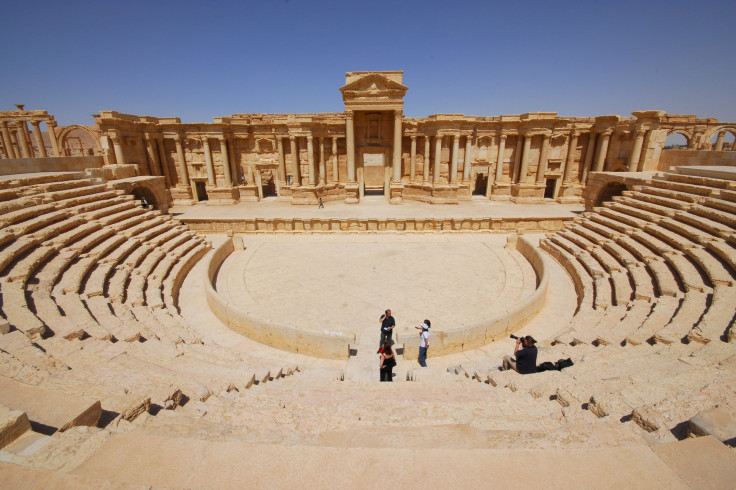Islamic State Execution Video: Teenage ISIS Militants Purportedly Shoot Syrian Soldiers In Ancient City of Palmyra

A video released Saturday by the Islamic State group appeared to show the mass execution of Syrian government soldiers in the ancient Syrian city of Palmyra, Agence France-Presse reported. Some 25 government soldiers were reportedly killed -- shot by teenage militants -- shortly after the militant group seized control of the ancient city on May 21.
These executions are far from the only ones that the Islamic State militant group, also known as ISIS, is believed to have carried out in Palmyra, in Syria's eastern desert. The day after the group overtook the city, it reportedly killed "hundreds" of civilians and government troops. It also sent news media images of four men being beheaded. Although the executed men wore civilian clothing, some reports described them as fighters for the Syrian government. The group also has reportedly executed five nurses in the city and has detained hundreds of others accused of hiding and protecting government troops.
ISIS, which controls large swaths of Iraq and Syria, overtook the city and neighboring areas in late May as government forces retreated and 11,000 residents fled. The government has since carried out airstrikes on the city, which activists say have failed to inflict harm on the militant group and instead hurt the city's remaining civilians, damaging their homes.
The Islamic State group has also destroyed ancient monuments and artifacts in or from the city, some of which date back more than 2,000 years. In late June, it released a video showing the deliberate explosion of two shrines in Palmyra. It also published photos Thursday depicting its members destroying a statue of a lion believed to be 2,000 years old. The group regards statues and other artifacts containing imagery as idolatrous.
The Syrian Observatory for Human Rights, a watchdog group, has said that the militant group has laced the ancient city with mines and improvised explosive devices to deter government forces.
Palmyra, known in Arabic as Tadmor, sat along what was once a crucial trade route linking the lands of the exotic East — Persia, India and China — to the Roman Empire. In modern times, prior to the four-year civil war that has devastated Syria, the desert oasis drew tourists seeking to explore its kilometer-long colonnaded street, the Temple of Ba'al and its oddly squat funerary towers standing multiple stories tall. The area is classified as a Unesco World Heritage site.
© Copyright IBTimes 2024. All rights reserved.






















